Make some noise for the natterjack
28/04/2017 in Conservation
Raising awareness of Scotland’s most endangered amphibian
It is Europe’s noisiest amphibian, yet most don’t know it exists. The natterjack toad is found throughout southwest and central Europe but is Scotland’s rarest amphibian and afforded protection by British and European law. They are currently found on about 60 sites across Britain and are also present in a small pocket in south-west Ireland, although the Scottish population is estimated at only a few hundred breeding adults and is confined completely to the Solway coast. It is a native species that the RZSS is increasingly interested in finding ways to safeguard due to its declining status within Scotland.
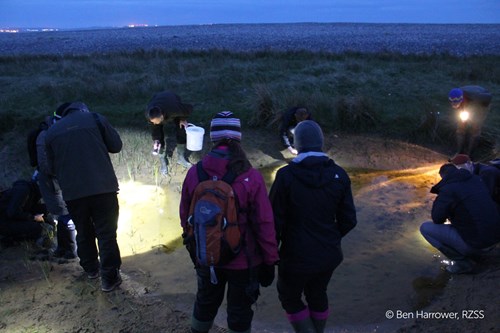
As part of my research into this species, I recently travelled down to Cumbria to take part in an Amphibian and Reptile Conservation course in the habitat of one of the largest natterjack populations in the UK. It began in the classroom covering the ID, ecology, legal aspects, surveying and conservation aims. As part of the ID section there were live natterjacks brought in for all participants to get a chance to study specimens up close along with some of the more common species such as Common toad and Common frog.
After the classroom session, it was straight out into the field to witness this fantastic species in its native habitat. Whilst looking for natterjacks, we found examples of other amphibian species, such as this family of Smooth newts all found under the same slate. The adult male is on the right, adult female bottom left and juvenile in the top centre.
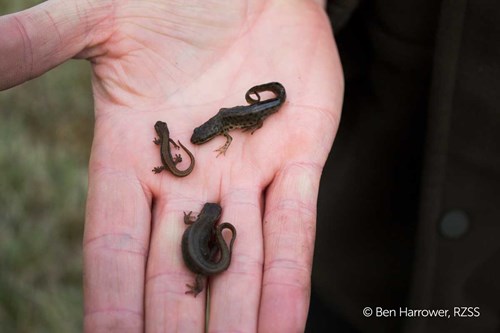
As the sun started setting, we began to get sightings of lone natterjack males in the pools waiting for females to arrive and eager to secure the best territory.
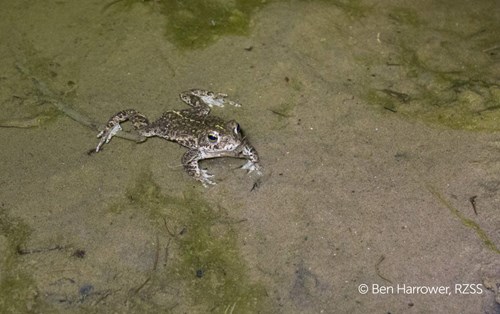
Spawn was also seen in nearly every pool we visited. Natterjack females lay two single strands that are often entwined around aquatic plants.
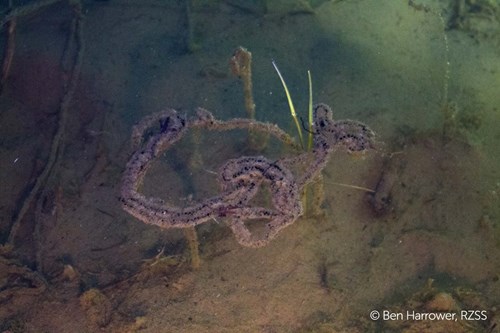
Competition starts to heat up with multiple males seen per female. The very loud call of the natterjack could be heard in most directions. Here is a male that was not shy about being heard.
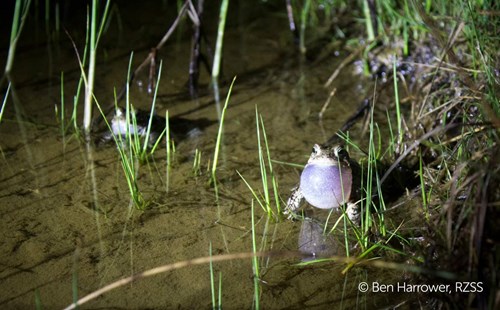
Eventually the females started appear and pair up with the males.
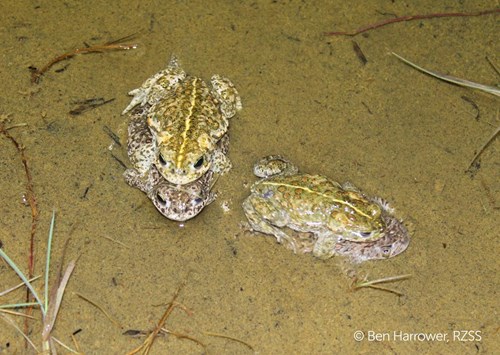
There are many things that make the natterjack unique among the UK’s herps. Did you know:
- They can be heard from a mile away!
- They don’t hop. They have short legs which results in them running after their prey
- This gives them their nickname of the ‘running toad’
- They are sand dune specialists although they can be found in other specific habitats such as grazing marshes and sandy heaths.
The course, delivered by Amphibian and Reptile Conservation in partnership with the Field Studies Council, gave an amazing insight into this fascinating species and into the important work being done in this area to safeguard natterjacks.
Hopefully the future will be bright for this unique amphibian and that natterjack numbers in Scotland will increase. Watch out for more updates on natterjacks in future RZSS Conservation blogs and on our website.
Ben Harrower
Conservation Programme Manager
Featured Articles

An update from the Budongo Forest
19/04/2024 in Conservation

Edinburgh Zoo named best zoo in Scotland
15/04/2024 in Edinburgh Zoo

























Follow EZ